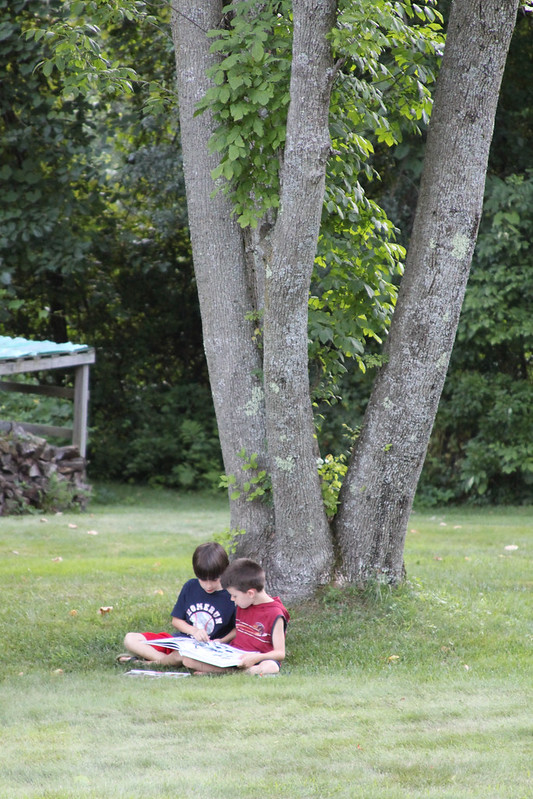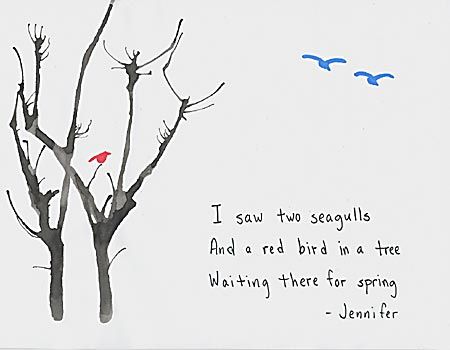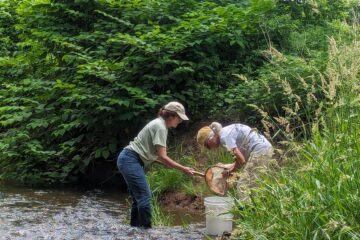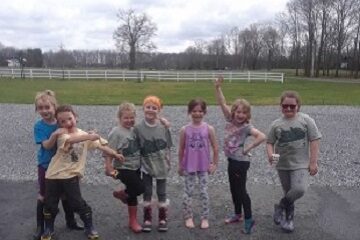Create a simple and descriptive poem using nature as inspiration! Created By Lauren Theis, Director of Education
Level: All Ages
Duration: 15 minutes to an hour
Setting: Indoors or Outside
Materials:
- Nature Journal or Paper
- Pencil and/or Crayons
The Activity:
Talk about how a haiku is a traditional Japanese poem about nature. It has a few simple rules:
- A haiku has three lines.
- The first line has five syllables, the second has seven, and the third has five. (5-7-5)
- It should stay in the present tense, talking about what’s happening right now.
- It should not rhyme.
- It should not contain metaphors (the moon is a pizza pie) or similes (dewdrops are like pearls).
- It should contain a clue to the season. (Words like “forest” or “moon” refer to nature, but they don’t indicate season. Words like “firefly” or “daylily” tell you it is summer.)
- It should use specific images, like “yellow lily,” instead of general ones like “flower.”
- It should show what you notice with an image rather than explaining in detail. For example, instead of saying “I saw a bird,” try “Bluebird on a post.”
- It can express any emotion, be humorous, sad, cheerful, or just quietly observe something about nature.
Here are a few examples of Haiku poems:

The least of breezes
Blows and the dry sky is filled
With the voice of pines
Green and speckled legs,
Hop on logs and lily pads
Splash in cool water.
Spring is in the air
Flowers are blooming sky high
Children are laughing
Each person should find a place to sit quietly (looking out the window or in your sit spot is a great place!). Before writing, they should use their senses to look, listen, smell, and feel their surrounding environment. What do they observe? Then, see what inspires a haiku to be born!
Afterwards, everyone can share if they like or illustrate a picture for their haiku. Adults and older siblings can set a good example by sharing!
Resources:
Four Winds Nature Institute, Backyard Haiku
You Too Can Haiku by ArtSedge Institute
How did you like this activity? Please share any questions, comments, or photos that you and your child have on the Raritan Headwaters Learning Community Facebook Page!
More Raritan Headwaters Learning Resources



